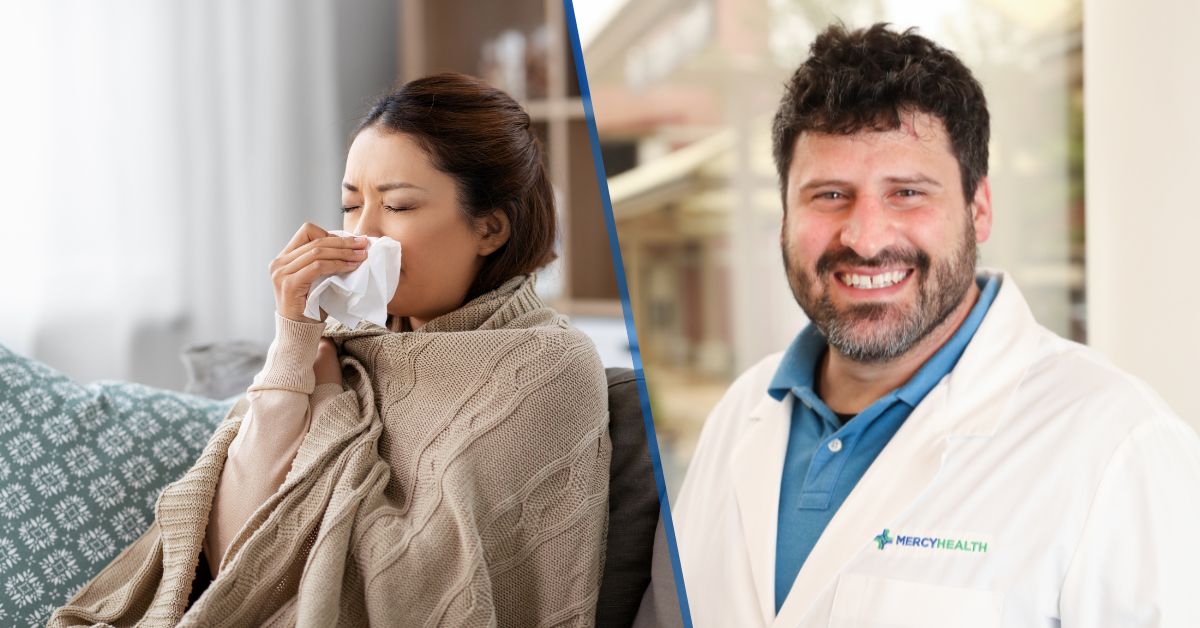Everyone gets a rash at some point. Most rashes are harmless and go away on their own, but some can be a sign of a more serious health problem. Knowing the types of skin rashes that may need medical treatment can help you decide when to see a doctor and when it’s OK to treat it at home.
When you need to see a doctor because of a rash, make an appointment with your primary care provider. If it’s after hours or your provider isn’t available soon enough, head to the nearest urgent care or walk-in clinic for faster care.
Types of skin rashes
Rashes can appear for many reasons, including infections, allergic reactions, heat or even bug bites. They can be red, bumpy, dry, itchy or painful. Sometimes they stay in one area, and other times they spread across the body. Let’s take a closer look at common types of skin rashes and when it’s time to get medical attention.
Allergic reaction rashes
One of the most common reasons for skin rashes is an allergic reaction. This can happen when your skin touches something that causes irritation, like poison ivy, nickel in jewelry or certain soaps or detergents. These rashes are often red, itchy skin with bumps or blisters and are a reaction called contact dermatitis.
In some cases, a rash from an allergy might be mild and go away after using calamine lotion or taking an antihistamine. But if you have trouble breathing, swelling in your face or throat or a rash that spreads quickly, you should get medical help right away. These can be signs of a severe allergic reaction.
Your doctor may recommend an allergy test if you keep getting rashes and can’t figure out the cause. This test helps determine what your body is reacting to.
Rashes from viral infections
Many viral infections cause rashes. These include common illnesses like chickenpox, measles and hand, foot and mouth disease. These rashes often come with other symptoms like fever, sore throat or tiredness.
Viral rashes usually go away on their own, but sometimes they need medical attention – especially in children or people with weaker immune systems. If your child has a rash with a high fever or seems very sick, it’s best to call your pediatrician or family medicine provider.
Bacterial infection rashes
Some rashes are caused by bacteria. One example is impetigo, a skin infection that usually affects kids. It starts as red sores that break open and form a yellow-brown crust.
Another example is cellulitis, which causes red, swollen and painful skin. These rashes can spread quickly and often need antibiotics to clear up.
If you have a rash that gets worse, feels hot to the touch or is spreading fast, see a doctor. These signs could mean the rash is from a bacterial infection and needs medical treatment right away. Going to an urgent care or walk-in clinic might allow you to see a provider before your primary care provider is available.
Fungal infection rashes
Fungal infections often appear in warm, damp areas like the feet, underarms or groin. Athlete’s foot, ringworm and jock itch are all common fungal infections. These rashes usually cause itchy skin and can be red or scaly in the affected areas.
Over-the-counter creams can treat most fungal rashes. But if the rash doesn’t get better or spreads, a doctor can prescribe a stronger medicine.
Heat rash
Heat rash happens when sweat gets trapped under your skin. It often appears as small red bumps or blisters and usually appears in places where skin folds or clothing rubs, like the neck, chest or back.
This type of rash is not dangerous and often goes away on its own. Keeping the area cool and dry, wearing loose clothing and taking an oatmeal bath can help ease symptoms.
Insect bites and tick bites
Bug bites can cause rashes, too. Mosquito bites usually lead to small, itchy bumps, while bites from other insects like spiders or fleas can cause more intense itching or swelling.
Tick bites are especially important to watch. If you notice a round, red rash that looks like a bullseye, it could be a sign of Lyme disease. This needs medical treatment as soon as possible.
If a bite leads to a rash that spreads, is very painful or comes with fever or chills, it’s time to call your doctor.
Itchy rashes that return often
If you often deal with an itchy rash that keeps coming back, it might be a chronic skin condition like eczema or psoriasis. These conditions may not be curable, but they can be managed with the help of your doctor. Treatment may include prescription creams, pills or changes to your skincare routine.
A rash that doesn’t go away or keeps coming back should always be checked out. Scratching itchy skin too much can break the skin and lead to a skin infection.
When should you see a doctor?
Certain types of skin rashes are easy to treat at home, but others need medical care. You should see a doctor if:
- The rash is very painful, red or swollen
- You have a fever along with the rash
- The rash is spreading quickly
- The rash is full of pus or has yellow scabs
- You have trouble breathing or swallowing
- The rash appeared after taking new medicine
- You think the rash might be from a tick bite or a black widow or brown recluse spider
Also, if you’ve tried home remedies like calamine lotion, cold compresses or oatmeal baths and nothing is helping, it’s a good idea to get medical advice.
How to avoid skin rashes
While not all rashes can be prevented, there are things you can do to lower your chances of getting one:
- Use gentle soaps and laundry detergents
- Wear protective clothing and use insect repellent when outside
- Avoid known allergy triggers
- Keep skin clean and dry, especially in hot weather
- Wash your hands often to avoid spreading viruses
How we can help
If you’re dealing with a rash that’s painful, spreading, or not improving, it’s a good idea to see your primary care provider. Some rashes need prescription medicine or further testing to identify the cause. However, you may need care after hours or your doctor’s schedule is full. If that’s the case, head to your nearest urgent care or walk-in clinic.
A provider can help diagnose the type of rash and recommend the best treatment, whether it’s an allergy, infection or another skin condition. Getting the right care early can help you feel better faster and avoid complications.
Learn about the primary care services as well as the urgent care and walk-in care services we offer at Mercy Health.






